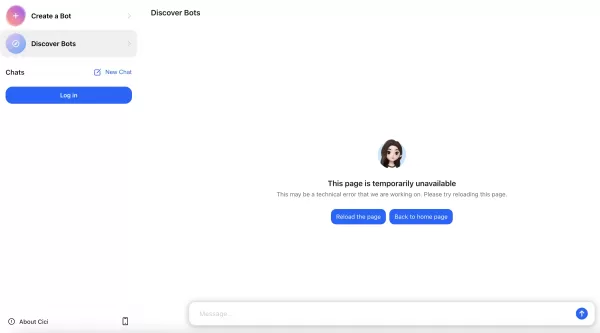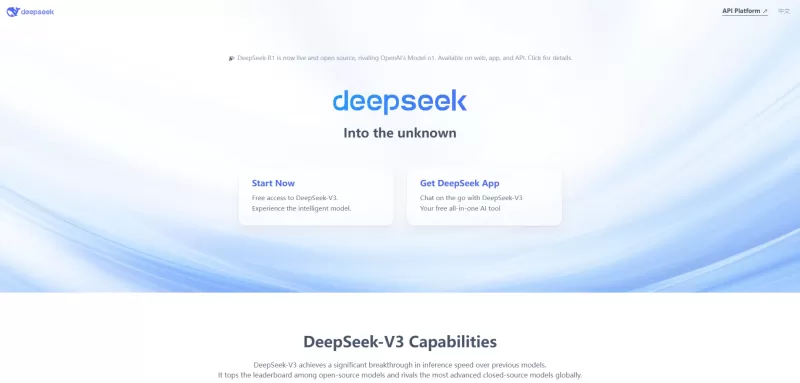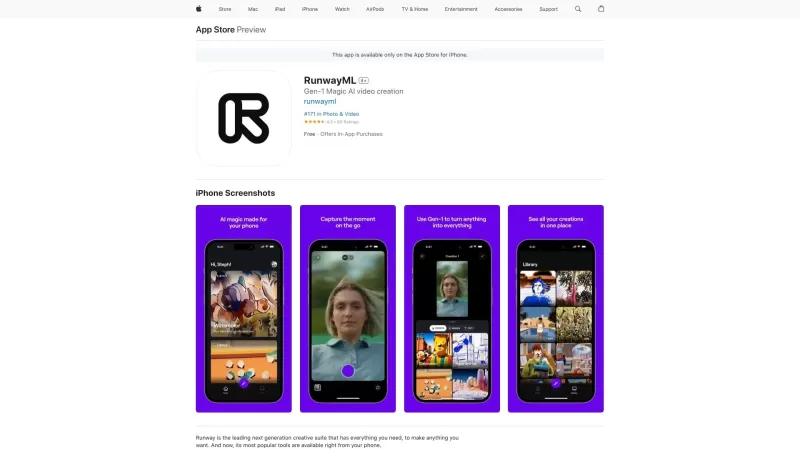8 Essential MacOS Apps I Can't Live Without - Here's Why
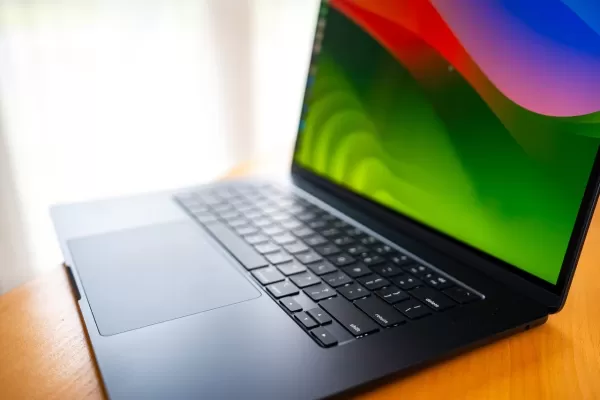
As a dedicated Linux user, I've found that MacOS serves me best when it comes to video editing. However, for writing, I rely on a handful of apps that streamline my workflow and ensure reliability. Here's a rundown of the essential tools I use daily on my Mac.
1. Arc Browser
While Safari gets the job done, it doesn't hold a candle to Arc. This browser isn't just about looks; it's a powerhouse. Arc manages tabs as efficiently as Opera, renders pages faster than Chrome, and offers more customization than any other browser out there. Since switching to Arc on MacOS, I've been nudging Browser Company to bring this gem to Linux. If they do, Arc would become my go-to browser on both my desktop and laptop.
Arc browser is free to use and install.
2. DaVinci Resolve
I used to swear by Final Cut Pro for video editing, but it couldn't quite deliver the visuals I needed. That's when I discovered DaVinci Resolve. Now, Final Cut Pro sits unused, gathering dust. DaVinci Resolve is hands down the best prosumer choice for editing and color grading. Its color tools are mind-blowing—I achieve lifelike skin tones effortlessly with the ACES workflow and can tweak colors to my heart's content.
There's a learning curve with DaVinci Resolve, so if you're trying the free version, do your homework first. I went for DaVinci Studio, the paid version, which costs a one-time fee of $295. For serious video editors, it's an investment that pays off.
3. Finder
I might be bold in saying this, but Finder is probably the best file manager around. Sure, file managers aren't the most thrilling topic, but imagine working without one! I use Finder not just for local files but also to connect to SMB and NFS shares across my network. Of all the file managers I've tried, Finder makes handling remote shares a breeze.
Finder comes pre-installed with MacOS.
4. Bartender 5
While not a necessity, Bartender 5 is a game-changer for me. It lets you tweak the MacOS menu bar's appearance—how it looks, what icons to show or hide, and more. My menu bar can get pretty crowded, but with Bartender 5, I can decide which icons stay visible and which ones hide away. That feature alone justifies the $20 one-time fee.
5. Grammarly Desktop
I'm not a fan of AI in creative work, but I make an exception for Grammarly Desktop. It catches those pesky commas and spelling errors that would otherwise drive my editors up the wall. When I submit my work, I want it to be as polished as possible, sparing my editors from fixing basic mistakes. Without Grammarly, they'd probably be tempted to punch me over my run-on sentences.
Grammarly Desktop works with both free and paid accounts.
6. Arc Studio
When I shift from writing books to scripts, I switch from LibreOffice to Arc Studio, a tool designed specifically for screenwriters. I've used it for TV pilots and stage scripts, and it formats them perfectly according to industry standards. While Final Draft might be the industry standard, Arc Studio is more affordable and easier to learn. If you're new to scriptwriting, I highly recommend giving it a try.
Arc Studio offers a free version, with paid plans at $69 or $99 per year. Check out the Arc Studio pricing page for more details.
7. Warp Terminal
I frequently use the terminal on MacOS for various tasks, and Warp Terminal is my top choice on both MacOS and Linux. It's more powerful, flexible, and just plain cooler than other terminals. Plus, it comes with a built-in AI tool that explains commands or code blocks, which is incredibly helpful when learning a new programming language. Even for basic commands like SSH, Warp Terminal shines with features like command completion, reducing guesswork and typing.
Warp Terminal is free to install and use, with options to purchase a license for additional AI requests and features. See the pricing details here.
8. LibreOffice
MacOS comes with iWork, but I've found it less reliable than LibreOffice. During my last novel, Pages suddenly declared my file read-only, and no amount of coaxing could make it writable again. Thankfully, I had a backup, but losing work on a 70k-word manuscript is a nightmare. With LibreOffice, I've had peace of mind. I've used it for years and encountered only a few easily fixed issues.
LibreOffice is free to download and install.
Related article
 Master Emerald Kaizo Nuzlocke: Ultimate Survival & Strategy Guide
Emerald Kaizo stands as one of the most formidable Pokémon ROM hacks ever conceived. While attempting a Nuzlocke run exponentially increases the challenge, victory remains achievable through meticulous planning and strategic execution. This definitiv
Master Emerald Kaizo Nuzlocke: Ultimate Survival & Strategy Guide
Emerald Kaizo stands as one of the most formidable Pokémon ROM hacks ever conceived. While attempting a Nuzlocke run exponentially increases the challenge, victory remains achievable through meticulous planning and strategic execution. This definitiv
 AI-Powered Cover Letters: Expert Guide for Journal Submissions
In today's competitive academic publishing environment, crafting an effective cover letter can make the crucial difference in your manuscript's acceptance. Discover how AI-powered tools like ChatGPT can streamline this essential task, helping you cre
AI-Powered Cover Letters: Expert Guide for Journal Submissions
In today's competitive academic publishing environment, crafting an effective cover letter can make the crucial difference in your manuscript's acceptance. Discover how AI-powered tools like ChatGPT can streamline this essential task, helping you cre
 US to Sanction Foreign Officials Over Social Media Regulations
US Takes Stand Against Global Digital Content Regulations
The State Department issued a sharp diplomatic rebuke this week targeting European digital governance policies, signaling escalating tensions over control of online platforms. Secretary Marco
Comments (16)
0/200
US to Sanction Foreign Officials Over Social Media Regulations
US Takes Stand Against Global Digital Content Regulations
The State Department issued a sharp diplomatic rebuke this week targeting European digital governance policies, signaling escalating tensions over control of online platforms. Secretary Marco
Comments (16)
0/200
![PaulTaylor]() PaulTaylor
PaulTaylor
 September 22, 2025 at 12:30:29 AM EDT
September 22, 2025 at 12:30:29 AM EDT
¿Alguien más cree que Arc Browser está sobrevalorado? 🤔 Yo sigo usando Chrome porque me acostumbré a sus extensiones. Pero admito que la lista tiene buenas recomendaciones, sobre todo para edición de vídeo en Mac.


 0
0
![JackMoore]() JackMoore
JackMoore
 August 24, 2025 at 1:01:14 AM EDT
August 24, 2025 at 1:01:14 AM EDT
The Arc Browser mention caught my eye! I've been stuck on Chrome forever, but hearing how it streamlines your workflow makes me curious. Is it really that much better than Safari for writing and multitasking? Gotta try it out! 😎


 0
0
![KennethJohnson]() KennethJohnson
KennethJohnson
 August 11, 2025 at 1:00:59 AM EDT
August 11, 2025 at 1:00:59 AM EDT
Arc Browser sounds like a game-changer for multitasking! I’m curious how it stacks up against Chrome for speed. The article’s focus on MacOS apps for video editing and writing is super relatable—always hunting for tools to make my workflow smoother. 😎


 0
0
![RyanTaylor]() RyanTaylor
RyanTaylor
 August 8, 2025 at 6:01:06 AM EDT
August 8, 2025 at 6:01:06 AM EDT
Arc Browser sounds like a game-changer for Mac! I’m curious how it stacks up against Safari for writing workflows. 😎 Gotta try these apps to boost my productivity!


 0
0
![KevinWalker]() KevinWalker
KevinWalker
 August 6, 2025 at 9:01:06 PM EDT
August 6, 2025 at 9:01:06 PM EDT
Arc Browser sounds like a game-changer for Mac users! I’m curious if it’s as smooth as Safari for video editing tasks. Gotta try these apps to boost my workflow! 😎


 0
0
![SamuelClark]() SamuelClark
SamuelClark
 July 22, 2025 at 2:33:07 AM EDT
July 22, 2025 at 2:33:07 AM EDT
The Arc Browser mention caught my eye! I’ve been stuck with Safari forever, but now I’m curious to try something new for a smoother workflow. Thanks for sharing these MacOS gems! 😎


 0
0

As a dedicated Linux user, I've found that MacOS serves me best when it comes to video editing. However, for writing, I rely on a handful of apps that streamline my workflow and ensure reliability. Here's a rundown of the essential tools I use daily on my Mac.
1. Arc Browser
While Safari gets the job done, it doesn't hold a candle to Arc. This browser isn't just about looks; it's a powerhouse. Arc manages tabs as efficiently as Opera, renders pages faster than Chrome, and offers more customization than any other browser out there. Since switching to Arc on MacOS, I've been nudging Browser Company to bring this gem to Linux. If they do, Arc would become my go-to browser on both my desktop and laptop.
Arc browser is free to use and install.
2. DaVinci Resolve
I used to swear by Final Cut Pro for video editing, but it couldn't quite deliver the visuals I needed. That's when I discovered DaVinci Resolve. Now, Final Cut Pro sits unused, gathering dust. DaVinci Resolve is hands down the best prosumer choice for editing and color grading. Its color tools are mind-blowing—I achieve lifelike skin tones effortlessly with the ACES workflow and can tweak colors to my heart's content.
There's a learning curve with DaVinci Resolve, so if you're trying the free version, do your homework first. I went for DaVinci Studio, the paid version, which costs a one-time fee of $295. For serious video editors, it's an investment that pays off.
3. Finder
I might be bold in saying this, but Finder is probably the best file manager around. Sure, file managers aren't the most thrilling topic, but imagine working without one! I use Finder not just for local files but also to connect to SMB and NFS shares across my network. Of all the file managers I've tried, Finder makes handling remote shares a breeze.
Finder comes pre-installed with MacOS.
4. Bartender 5
While not a necessity, Bartender 5 is a game-changer for me. It lets you tweak the MacOS menu bar's appearance—how it looks, what icons to show or hide, and more. My menu bar can get pretty crowded, but with Bartender 5, I can decide which icons stay visible and which ones hide away. That feature alone justifies the $20 one-time fee.
5. Grammarly Desktop
I'm not a fan of AI in creative work, but I make an exception for Grammarly Desktop. It catches those pesky commas and spelling errors that would otherwise drive my editors up the wall. When I submit my work, I want it to be as polished as possible, sparing my editors from fixing basic mistakes. Without Grammarly, they'd probably be tempted to punch me over my run-on sentences.
Grammarly Desktop works with both free and paid accounts.
6. Arc Studio
When I shift from writing books to scripts, I switch from LibreOffice to Arc Studio, a tool designed specifically for screenwriters. I've used it for TV pilots and stage scripts, and it formats them perfectly according to industry standards. While Final Draft might be the industry standard, Arc Studio is more affordable and easier to learn. If you're new to scriptwriting, I highly recommend giving it a try.
Arc Studio offers a free version, with paid plans at $69 or $99 per year. Check out the Arc Studio pricing page for more details.
7. Warp Terminal
I frequently use the terminal on MacOS for various tasks, and Warp Terminal is my top choice on both MacOS and Linux. It's more powerful, flexible, and just plain cooler than other terminals. Plus, it comes with a built-in AI tool that explains commands or code blocks, which is incredibly helpful when learning a new programming language. Even for basic commands like SSH, Warp Terminal shines with features like command completion, reducing guesswork and typing.
Warp Terminal is free to install and use, with options to purchase a license for additional AI requests and features. See the pricing details here.
8. LibreOffice
MacOS comes with iWork, but I've found it less reliable than LibreOffice. During my last novel, Pages suddenly declared my file read-only, and no amount of coaxing could make it writable again. Thankfully, I had a backup, but losing work on a 70k-word manuscript is a nightmare. With LibreOffice, I've had peace of mind. I've used it for years and encountered only a few easily fixed issues.
LibreOffice is free to download and install.
 Master Emerald Kaizo Nuzlocke: Ultimate Survival & Strategy Guide
Emerald Kaizo stands as one of the most formidable Pokémon ROM hacks ever conceived. While attempting a Nuzlocke run exponentially increases the challenge, victory remains achievable through meticulous planning and strategic execution. This definitiv
Master Emerald Kaizo Nuzlocke: Ultimate Survival & Strategy Guide
Emerald Kaizo stands as one of the most formidable Pokémon ROM hacks ever conceived. While attempting a Nuzlocke run exponentially increases the challenge, victory remains achievable through meticulous planning and strategic execution. This definitiv
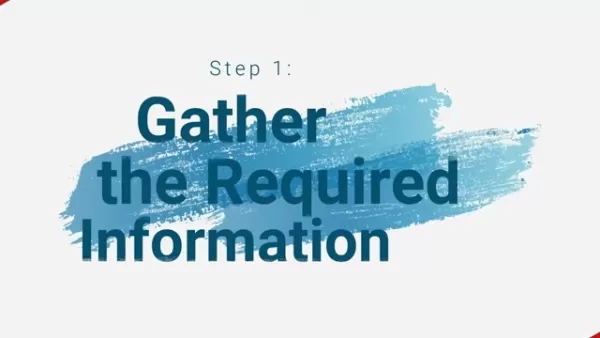 AI-Powered Cover Letters: Expert Guide for Journal Submissions
In today's competitive academic publishing environment, crafting an effective cover letter can make the crucial difference in your manuscript's acceptance. Discover how AI-powered tools like ChatGPT can streamline this essential task, helping you cre
AI-Powered Cover Letters: Expert Guide for Journal Submissions
In today's competitive academic publishing environment, crafting an effective cover letter can make the crucial difference in your manuscript's acceptance. Discover how AI-powered tools like ChatGPT can streamline this essential task, helping you cre
 US to Sanction Foreign Officials Over Social Media Regulations
US Takes Stand Against Global Digital Content Regulations
The State Department issued a sharp diplomatic rebuke this week targeting European digital governance policies, signaling escalating tensions over control of online platforms. Secretary Marco
US to Sanction Foreign Officials Over Social Media Regulations
US Takes Stand Against Global Digital Content Regulations
The State Department issued a sharp diplomatic rebuke this week targeting European digital governance policies, signaling escalating tensions over control of online platforms. Secretary Marco
 September 22, 2025 at 12:30:29 AM EDT
September 22, 2025 at 12:30:29 AM EDT
¿Alguien más cree que Arc Browser está sobrevalorado? 🤔 Yo sigo usando Chrome porque me acostumbré a sus extensiones. Pero admito que la lista tiene buenas recomendaciones, sobre todo para edición de vídeo en Mac.


 0
0
 August 24, 2025 at 1:01:14 AM EDT
August 24, 2025 at 1:01:14 AM EDT
The Arc Browser mention caught my eye! I've been stuck on Chrome forever, but hearing how it streamlines your workflow makes me curious. Is it really that much better than Safari for writing and multitasking? Gotta try it out! 😎


 0
0
 August 11, 2025 at 1:00:59 AM EDT
August 11, 2025 at 1:00:59 AM EDT
Arc Browser sounds like a game-changer for multitasking! I’m curious how it stacks up against Chrome for speed. The article’s focus on MacOS apps for video editing and writing is super relatable—always hunting for tools to make my workflow smoother. 😎


 0
0
 August 8, 2025 at 6:01:06 AM EDT
August 8, 2025 at 6:01:06 AM EDT
Arc Browser sounds like a game-changer for Mac! I’m curious how it stacks up against Safari for writing workflows. 😎 Gotta try these apps to boost my productivity!


 0
0
 August 6, 2025 at 9:01:06 PM EDT
August 6, 2025 at 9:01:06 PM EDT
Arc Browser sounds like a game-changer for Mac users! I’m curious if it’s as smooth as Safari for video editing tasks. Gotta try these apps to boost my workflow! 😎


 0
0
 July 22, 2025 at 2:33:07 AM EDT
July 22, 2025 at 2:33:07 AM EDT
The Arc Browser mention caught my eye! I’ve been stuck with Safari forever, but now I’m curious to try something new for a smoother workflow. Thanks for sharing these MacOS gems! 😎


 0
0

